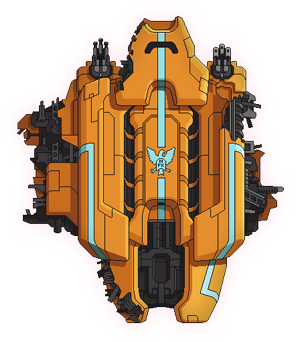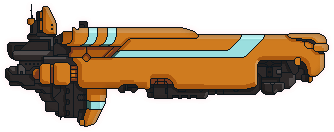FTL ships guide
by Mike Hopley
by Mike Hopley

This guide contains all kinds of tips, from basic strategy to extremely advanced micro.
Some tips are tiny optimisations that rarely matter. You may want to ignore them, depending on your skill level and how you prefer to play.
My perspective here is wanting to win consistently on Hard, but most advice applies on lower difficulties too.
I don’t want to clutter the guide with attributions, so I’ll just mention the people I’ve learned most from, or had the most interesting conversations with.
In no particular order:
Twinge, mekloz, Thomas Pettersson, Billy Kirby, chewbacca77, lifesaburrito, Crowrevell, Farb, Masala, Threarah, Hexagon, Scott Onesie Wilson, DiscordDraconequus, neozar, Ray Robertson, mathchamp93, TheSwiftTiger
No doubt I’ve missed some. The FTL community is amazing.
To win consistently, you must play as “safely” as possible and get through the dangerous early game in good shape. To be “safe”, you need two things as soon as possible:
“Offence” often means a weapon or hacking. It could also be mind control, teleporter, or a combat drone.
For most ships and most runs:
Shields-3 provides a damage buffer, so your shield will not go down from (say) a Leto. Most of the time, you can get away without this; but it only takes one nasty fight where you lose 20 hull to make you appreciate the value of shields-3.
Don’t wait on power before buying shields-4. You don’t need power until sector 3 or later.
This strategy has a downside: it may stop you buying a weapon or system in a sector 1 store. A bad layout in sector 2 could prevent you from finding any stores, or the stores might be useless.
For that reason, it’s sometimes worth delaying your shield upgrades. There are two possibilities:
You can also choose how long you delay them. You could delay just a few jumps, because you are circling around a store in the middle of the sector. Or you could wait for a store at the end of sector 1 or early sector 2.
In most circumstances — but not all, and it depends on the ship — I think it’s incorrect to delay shield upgrades more than a few jumps.
The shield hack drone is out there, waiting for you. It knows nothing of mercy, neither of fairness, nor yet charity; and in its lifeless eyes, the noble pursuit of win streaks is but a guttering candle, soon to be extinguished.
The biggest factor is what ship you are playing. Some ships have safer starts. Some ships are more desperate for additional offence. Some ships have more stuff to sell. These concerns often compete with each other.
When a ship starts with strong defence or offence, delaying shield upgrades is less risky. For example, Zoltan C is a lot safer because it starts with a Zoltan Shield and fast offence. Kestrel A and Rock A are a little safer, because they start with two-point weapons buffers for the Artemis. Federation C is not at all safe.
When a ship urgently needs extra offence, delaying shield upgrades is more worthwhile. Rock A needs to solve its missile problem fast.
When a ship has more stuff to sell, visiting early stores is more worthwhile and does not delay your shields as much. Rock A need only float 18 scrap to afford even a teleporter, but Kestrel A would need to float 80 for hacking or a full choice of weapons.
Recognise greed. If you’re only in the market for top-tier weapons, it’s probably incorrect to delay shield upgrades. A good question to ask yourself might be, “if an early store had a Chain Laser, would I buy it?”
Even on Zoltan ships, beware delaying shields for too long. When you enter sector 3, you can face enemies with two offensive drones.
Consider Kestrel C, Federation A and B, and Slug C. These ships start with both shields and weapons-2. They also can have trouble with enemies getting away.
This presents a choice: do you spend 25 scrap upgrading weapons before shields?
It’s hard to be sure what is correct, but I think the shield upgrades are safer overall. I could be wrong about this!
Weapons-3 plays a similar role to shields-3, with a few differences. A weapons buffer helps stop enemies getting away, but a shields buffer makes run-ending disasters less likely.
The other big difference is what they prepare you for. Shields-3 leads directly into shields-4. Weapons-3 potentially lets you use another weapon, but only when you find or buy one.
In sectors 1 and 2, I generally want shields more than I want another weapon online. The weapon is mostly for sector 3. Opening with the weapons buffer leads me into a shields buffer, and then into shields-4. That’s 75 scrap spent on safety before I start saving for a weapon.
This evaluation could change if you find (or buy) a 1-power weapon early, because then you know that buying the buffer gets a weapon online immediately.
Engines-2 and engines-3 are useful and cheap. Fit them in when you can, but do not let them delay shield upgrades or stop you buying an early weapon or system. At 15 scrap, engines-3 competes with shields-3, and I think shields-3 is almost strictly better.
Note that shields-4 is much better than early engine upgrades, because it also lets you farm crew skill against enemies that cannot hurt you. 10% free evade is about 90 scrap value!
Piloting-2 can be tempting when you’re visiting nebula beacons without a clone bay, for a chance of a free weapon; but this is very luck-dependent. That 20 scrap is better spent on shields-3.
Never waste early-game scrap on luxury purchases like medbay-2, doors-2, or Scrap Recovery Arm.
The Stealth cruisers have no shield system at all, and Zoltan B only has shields-1. Mantis B starts with shields-4.
The strategies for these ships are quite different, reflecting their special starting conditions.
In chess, there are many “standard openings” that have stood the test of time. These openings are preferred as they don’t have serious exploitable flaws.
Often it’s possible to use a different move order and arrive at the same opening position later. This is called a transposition. Expert chess players use transpositions to gain subtle advantages, even choosing them based on knowledge of the opponent’s playstyle.
Some openings are quite rigid, while others have a maze of transpositions that lead off into obscure openings, into small variations, or back to the main opening line.
Consider the same idea with FTL. With some ships, your opening might be rigid. With other ships, you might vary the move order according to the situation.
These choices might depend on how your opponent behaves. You can think of FTL as the opponent. Always take into consideration what your opponent is doing.
I know FTL pretty well. I win almost every game, unless I’m doing challenges.
That doesn’t mean I’m right about everything, especially when it comes to difficult strategic decisions. FTL is strategically deep, and it’s easy to get set in your ways.
There’s a lot to be said for trying different strategies, and learning by experience. I’m still learning.
